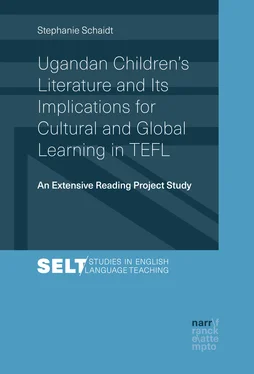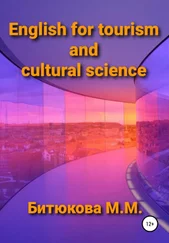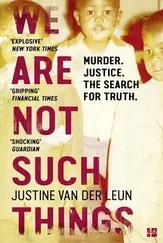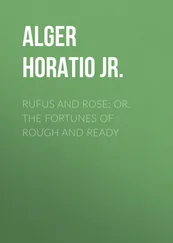When I was young, I was reading stories from abroad. Cinderella, you know the classics from abroad. “Snow White”. And also stories of Roald Dahl, Enid Blyton. All of the books, I think, were from writers from abroad. Because that was what was there. (Ranzo, 2014)5
In the late 1980s and beginning of the 1990s, local publishing houses also started to emerge (e.g. Fountain Publishers, MK Publishers) and they put special emphasis on the publication of literature for young people. Today also literary NGOs (Strauhs, 2013) such as the Ugandan Women Writers’ Association, FEMRITE, (see Chapter 4.4.2) and the Uganda Children Writers and Illustrators Association (UCWIA)6 are building a platform for women writers and writers for young readers to contribute to the Ugandan literature scene.
Up to today, international organisations and also the Ugandan government have had a strong impact on the publishing industry in Uganda. They frequently commission writers of children’s literature to write about certain topics, e.g. HIV/AIDS, and so influence them in their writing. Moreover, they are involved in the distribution of books in the country. In the following, neo-imperialistic tendencies in African/Ugandan literature are explored, after which I will discuss postcolonial literature.
4.3 Neo-imperialism, Postcolonialism and Ugandan Children’s Literature
Imperialistic ideologies in children’s literature about Africa have still not disappeared today. As Edward Said (1993, p. 9) states in Culture and Imperialism “[i]n our time, direct colonialism has largely ended; imperialism […] [however] lingers where it has always been, in a kind of general cultural sphere, as well as in specific political, ideological, economic, and social practices”. Children’s books in particular offer themselves for imperialist ideologies, Maddy and MacCann (2009, p. 6) observe: “Children’s books retain their usefulness to the imperialist because they greatly oversimplify some information and at the same time make it easy for children to internalize a well-dramatized, well-crafted set of ideas”.
Various scholars, therefore, have examined contemporary children’s books that deal with Africa and discovered neo-imperialistic tendencies1 (Attikpoé, 2006; Maddy & MacCann, 2009; Richards, 1989). The researchers hold that contemporary novels such as A Girl Named Disaster (1996) by Nancy Farmer and Our Secret, Siri Aang (2004) by Cristina Kessler display stereotypes about Africa and Africans. Those books are often praised in Western countries, become bestsellers and are even awarded prestigious awards. But they portray Africa from a merely Western perspective and give their readers a false picture of the continent by presenting stereotypes and misconceptions, the scholars criticise.
Such wrong ideas about Africa portrayed in the children’s books of many Western writers include ‘dark continent’ mythologies, presentations of whites as superior, and degenerations of African customs and traditions. Even in the twenty-first century it is still true that,
[t]he jungle-type environment is still a favourite setting for books on Africa. Even books published in the last decade prefer a premodern, rural, or primitive setting, while modern city life, with its inherent adjustment to postcolonial realities, is totally ignored. It is the mysterious, Edenic, or traditional Africa that Western writers try to evoke. (Khorana, 1994, p. xxi)
Frequently, Western writers use children’s books about Africa to raise topics which are primarily of their own interest such as “environmental protection, Western feminism, disease prevention, law and order” (Maddy & MacCann, 2009, p. 18). Many of the books focus on development aid and the role Western development aid workers play in the ‘underdeveloped’ countries. They so depict societies which are in need of help from white people. Furthermore, international organisations often publish and distribute books by writers in African countries, also Uganda, on topics they consider educative for children. Sometimes writers are also given seminars and guidelines which instruct them in their writing. This may also be interpreted as a neo-imperialistic influence in children’s fiction.2
Neo-imperialism becomes apparent in yet another sphere: Even today the practice of importing Western texts to Africa continues. International development organisations such as Book Aid International, located in the UK, work “in partnership with libraries in Africa providing books, resources and training to support an environment in which reading for pleasure, study and lifelong learning can flourish” (Book Aid International, 2015). The organisation further explains on its website that most of the books that are sent to African countries are donated by UK publishers:
Our work would not be possible without the generous support of the UK publishing and book trade sector. Over 90 % of the books we send to our partners are donated by publishers and we work closely with our partners to understand their needs so that we can ensure the books we send are relevant and useful. (Ibid.)
Taking into account that school libraries in African countries are gradually filling up with books by mainly UK-based publishing houses like that, which in the case of school books are oriented towards the school curricula in the UK, I argue, however, their relevance may be questioned. Also in libraries and bookshops in the Global North children’s books by African writers are still rare. It is mainly small publishing houses which publish literature by writers based on the African continent and translate it into other languages, for example German. There are only a few children’s books by African writers which have gained international attention: “So far in German speaking countries the most important book of an African author is Meja Mwangi’s Kariuki and His White Friend (1991), which in 1992 was awarded the German Youth Literature prize” (Braunlein, 1997–1999, p. 46).
Thus, much of the children’s fiction about Africa and also the distribution structures remain imperialistic in one way or another. Colonial misconceptions “continue to define Africa in the lives of Western schoolchildren” (Maddy & MacCann, 2009, p. 113).
There is, however, an increasing amount of postcolonial African children’s literature that readers and educators can resort to. Before a closer insight into postcolonial Ugandan children’s literature is provided, a definition of the term ‘postcolonial’, particularly with reference to children’s fiction, is required.
Boehmer (1995, p. 3) defines postcolonial literature as literature which “critically scrutinizes the colonial relationship. It is writing that sets out in one way or another to resist colonialist perspectives”. Postcolonial3 writing is often described as writing back to the colonisers, the oppressors. The postcolonial subjects, the formerly silenced, raise their voices, speak for themselves and so become heard and recognised. For Perry Nodelman (1992) and Jacqueline Rose (1984), children’s literature and its criticism, however, are always colonialist. Perry Nodelman constructs many parallels between Said’s Orientalism (1978; see Chapter 2.4) and fiction for children. In children’s literature, children are usually spoken for by adults, he argues. In analogy to Said, Nodelman thus describes children’s literature as a study of ‘the other’ (1992, p. 29). Also according to Rose (1984, p. 10), “[t]here is no child behind the category ‘children’s fiction’, other than the one which the category itself sets in place, the one which it needs to believe is there for its own purposes”. She bases her line of argument on The Little White Bird (Barrie, 1902) but it may also be applied to other children’s literature. Mushengyezi (2008, p. 235), for example, questions whether there is really a child behind the category of oral Ugandan children’s literature:
Читать дальше












